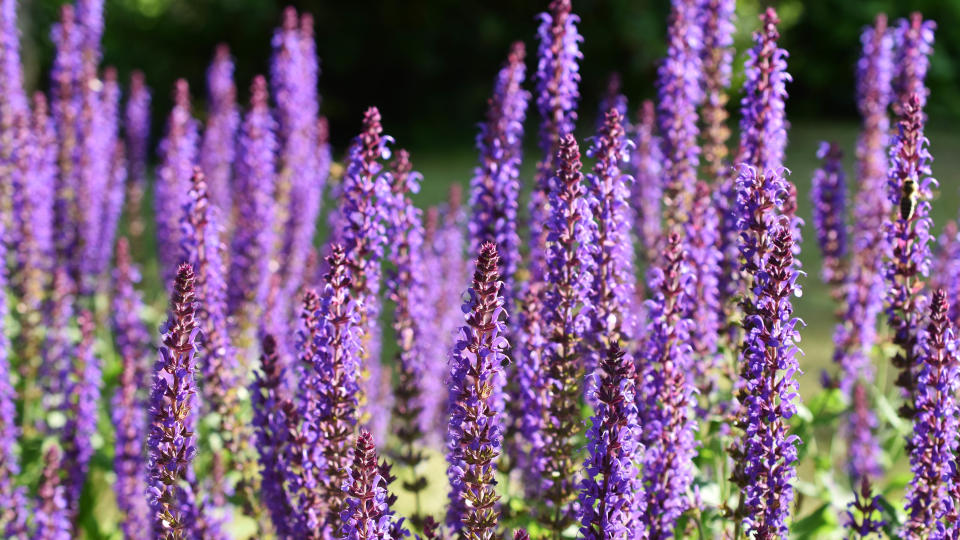5 plants that attract butterflies and other pollinators to your yard

Encourage bees, butterflies and insects into your yard this spring and summer by planting flowers that attract pollinators. Apart from watching the wildlife at work, you’ll play a vital role in supporting the ecosystem.
There are plenty of pollinating plants to choose from, whether you’re looking to start a wildlife garden, plan to add a few pollinating plants to your existing borders, or have a small yard and have a container garden.
As a keen home gardener who's determined to create a bee-friendly garden in time for summer, here are the top 5 pollinating plants I'd recommend to attract wildlife to your yard.
1. Lavender

I’d always recommend lavender as one of the best pollinators. It’s a beautiful fragrant shrub that is everyone’s favorite, including the bees and butterflies. Lavender is a long-lived perennial shrub that looks beautiful planted on its own or in sways of low hedging at the edge of a pathway, where the fragrance is released as you brush past.
English Lavender, ‘Lavandula angustifolia’, is a good choice as it produces an abundance of nectar for bumblebees, honeybees, butterflies and moths. It makes sweet fragrant flowers between June, July and August and will grow to 1-2ft tall and 3-4ft wide.
If planting as a hedge, Bee Happy Plants recommends spacing the lavenders at 18-24 inches apart. There’s plenty of lavender to choose from, but if space is an issue, Richard Jackson Gardens recommends planting ‘Munstead’, which is compact and good for container planting.
What’s more, lavender is easy to grow from cuttings, so once you have one plant, you can cultivate more.
2. Majoram

One common garden herb that makes an excellent pollinator is marjoram, which produces flower spikes with dozens of blooms that the pollinators adore. The Institute of Food & Agricultural Sciences at the University of Florida explains that by visiting flowers that form in clusters, the pollinators spend less energy flying from bloom to bloom and can conserve their energy.
Wild Marjoram, ‘Origanum vulgare’, is a particular magnet for bees, butterflies and other pollinators and flowers between July and August, producing small purple flowers. It’s a perennial herb that grows up to around 30in tall and favors a sunny position and not too fertile, well-drained soil.
The benefit of growing herbs to attract pollinators is that they can be added to recipes for an injection of flavor. And although marjoram is in the same genus family as oregano, it is sweeter, and has a more delicate and floral flavor.
Apart from marjoram, there are many other common herbs, such as rosemary, oregano, basil and borage that make excellent pollinator plants.
3. Salvias

Fragrant salvias are another of my favorite plants in my yard, with the added benefit of smelling beautiful and looking pretty as their fine branches and blooms sway in the breeze. I prefer the delicate nature of the more free-flowing varieties, such Salvia greggii ‘Mirage Deep Purple’ and Salvia greggii ‘Cherry Lips’, which will grow to about 18in tall and 24in wide.
However, you might be more familiar with the brightly colored flower spires of Salvia nemora. This species flowers from late spring to early summer and is more compact than Salvia greggii.
Between June to November, as soon as the sun shines, your salvias will be covered in bees and butterflies. They’ll do well in moist, well-drained soil and positioned in full sun.

Eco-friendly Bee House Hotel: $18 @ Amazon
Attract bees and insects to your garden and offer them a place to stay where they can hibernate, nest and lay eggs away from predators. By looking after the bees you'll be protecting the ecosystem. This products comes ready assembled and is idea for any size of garden space.View Deal
4. Cat mint

Cat mint is not just for your feline friends, it’s a popular plant with pollinators. The plant produces scented tubular blue flowers from late spring through to autumn, ensuring a continuous food source for pollinators.
It enjoys full to partial shade and will grow to 1ft tall and 3ft wide, and forms a compact mound. Although there are plenty of varieties to choose from, Nepate ‘Six Hills Giant’ makes a good choice, with its long stalks of purple flower clusters.
This perennial plant dies back in winter to ground level and returns to life in spring.
Why cats love cat mint
Cat mint is part of the Nepate genus, known for producing the chemical nepetalactone. Its structure is similar to certain feline pheromones and is intoxicating to cats. But while cats crave the plant, other species are repelled by it, including mosquitos – making it a perfect patio plant in the summer.
5. Alliums

Alliums are superb architectural plants that produce attractive globe-shaped flowers with small star-shaped florets. They are also bee and butterfly magnets offering a rich source of nectar. However, you might be surprised to discover that these gorgeous flowers are related to edible onions, garlic and leeks.
Allium ‘Globemaster’ is an excellent choice, and it blooms in early summer with giant purple flowers. As mentioned above, pollinators can benefit from landing on clusters of flowers as they are provided with a rich feast without having to find another plant.
I love to plant allium bulbs in containers in my yard, but I don’t have much success, as my resident family of squirrels enjoys digging them up!
Choose native plants
When choosing the best pollinating plants for your yard, native plants are considered the best. According to the U.S. Department of Agriculture (USDA), this is due to their abundance of nectar and pollen, in addition to being low maintenance and generally pest and drought-resistant.
The National Wildlife Federation has a helpful Native Plant Finder, where you can insert your ZIP Code to discover plants that are most suitable for your area.
